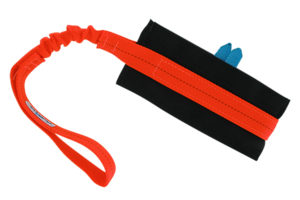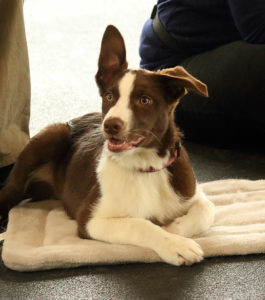Today was week 4 of our Puppy Party class. This is a class for puppies from about 12 weeks to about 10 months of age.
For today’s lesson I had planned the following:
- Cavaletti
- Black plastic bag and shiny tarps on floor
- All our squishy Bosus, pods, FitBones and such – our “squishy” things
- Ladder
- Work on sit stay
- Targeting hand chapter 3 – positioning puppy using hand target
- Puppy Zen (handler with outstretched hand – to side — (cookie within), puppy sitting front, reward for eye contact (click-treat); advanced puppies’ handlers had two outstretched hands
- Teach stand
- Review targeting to mat
- Last minute I threw in some tarps (including a “solar” one with reflective stuff on it) and a black trash bag
These classes always take on a life of their own. Today was exceptional in that I almost didn’t hang onto it at all. Way too much fun!
Only four of our eight puppies came. We were competing with one case of kennel cough, a conformation show in the area, and one handler who keeps forgetting about the class, and another who was taking her pup to the orthodontist (!). We had fun anyway. Would have been twice as much fun with them.
The puppies were very happy to greet each other. They’re old buds now, at four weeks into the class – even last week’s addition, a 12-week-old Rottie girl, was happy to meet up with the other pups.
I invited all to wander around on the random “course” I’d laid out with the ladder, about 10 “pods,” Bosus, two FitBones, and two FitBone ramps; the two tarps and the trash bag spread out in a corner, and ending with four cavaletti set at 2”. Next week I must have video! A lovely, gentle chaotic dance ensued, with puppies engaging with the items in the environment and with each other and even occasionally with the puppy “moms” at the ends of their leashes.
Our little cocker pup, who was horrified at the concept of the shiny tarp surface, ended up parading all over the weird stuff and prancing through the ladder (it was her enemy last week). Zazzy, the Berner, who was also terrified of the ladder last week, went through it like an old friend. She kept trying to take the cocker pup (LilyMae) home with her (by the cheek, unfortunately, though she was gentle about it).
This went on for way too long, except that was it continued to be fun for the pups and they all made obvious advances in confidence. Our one older pup, Olive, who is a 10-month-old Lab, was sitting astraddle on the FitBones (another missed Polaroid moment) and doing nice sit-stays and other tricks for her mom.
We did not do targeting to the mat, though we reviewed hand targeting and using it to position the pups around our bodies; did some puppy Zen (they were brilliant – Olive was successful with two hands). We also did not teach the stand. I never teach the stand. I hate to teach the stand.
I love the informality of the class. The people are all opening up and asking more questions of me, are making friends with the other moms, and learning to let their puppies show them what they can do.
Can you believe I’m getting paid to do this?




 Many of our students have questions about vaccinations and the safety of their pups in classes before they are “fully” vaccinated. We feel your puppy is safe coming to our small classes if he has received his first two vaccinations against parvovirus and distemper. Your pup will not be ready for rabies vaccination until he is at least 4 months of age; however, puppies are able to attend class before they reach that age. The chances of them being bitten by a rabid puppy are about 0 to none. 🙂
Many of our students have questions about vaccinations and the safety of their pups in classes before they are “fully” vaccinated. We feel your puppy is safe coming to our small classes if he has received his first two vaccinations against parvovirus and distemper. Your pup will not be ready for rabies vaccination until he is at least 4 months of age; however, puppies are able to attend class before they reach that age. The chances of them being bitten by a rabid puppy are about 0 to none. 🙂